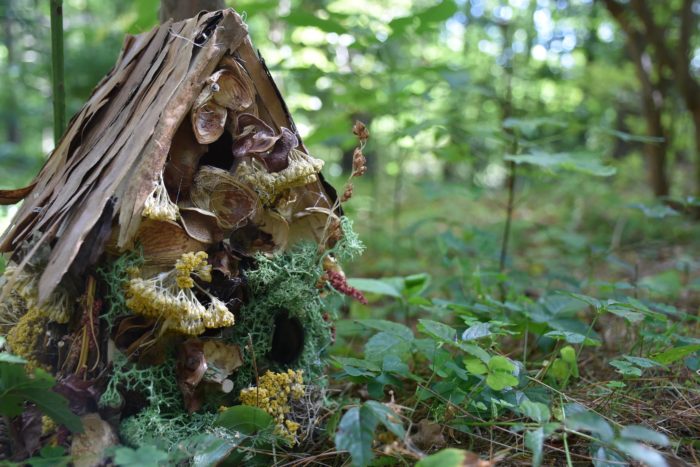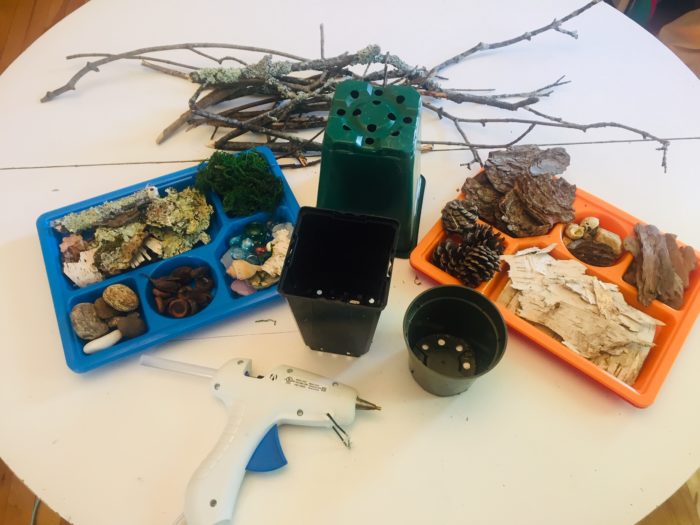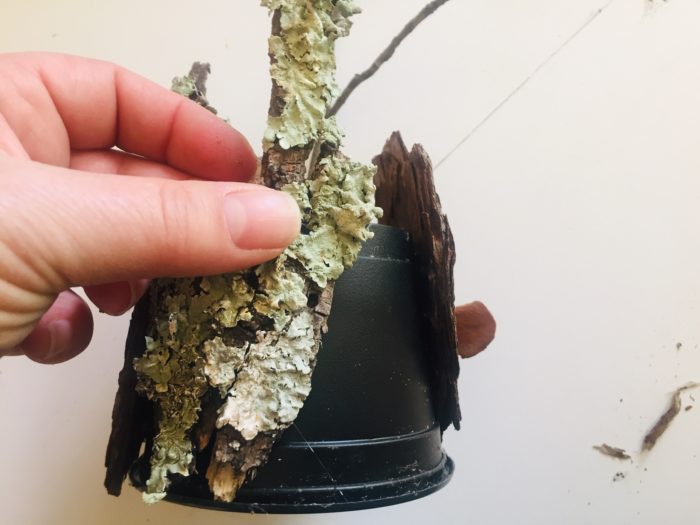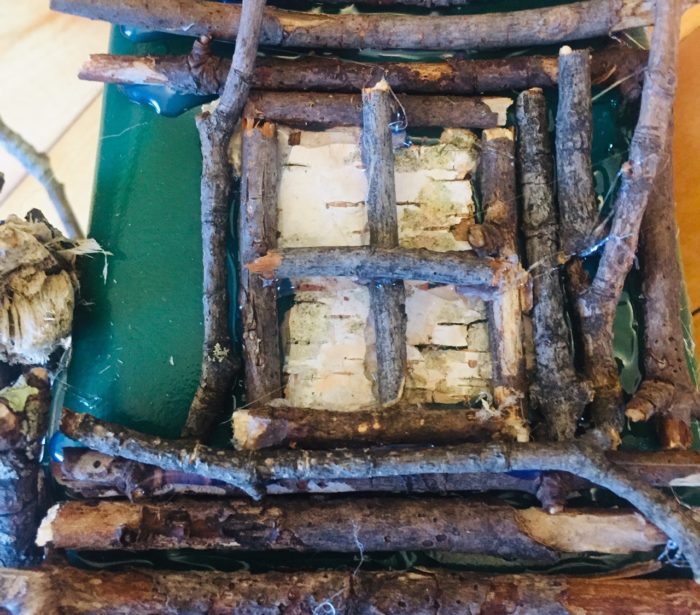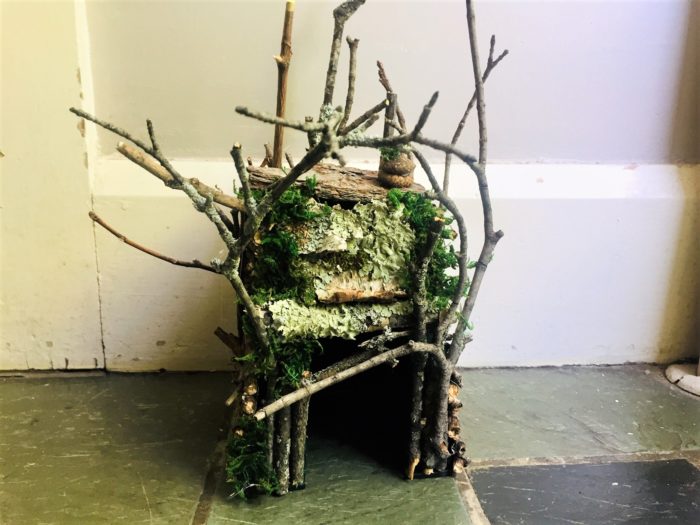Wonders of Nature
Marissa Gallant
Youth Education Manager
No matter if you live in the city, country, or suburbs, the world outside your window is full of enchantment and mystery, all you need is a little imagination and fairy dust. Join us as we explore the magical world of fairies, gnomes, and elves. Read on and tune in to learn how to make your own fairy house for our fairy village or a temporary abode in your own backyard.
Create a Fairy House for New England Botanic Garden at Tower Hill!
For thousands of years magical beings have made their homes in the gardens and trails at New England Botanic Garden at Tower Hill. Fairies, gnomes, elves, and more seek shelter in our gardens and throughout our trails. While our grounds are full of magic year-round, legend has it that the fairy houses made by visitors, staff, and volunteers attract fairies in record numbers when on display. Be a part of the magic and check out our step by step guide for tips on creating your own fairy house. Once your house is complete, bring your creation to New England Botanic Garden at Tower Hill to be put on display in our formal gardens this summer. Come back and visit through the summer to see if any fairies have taken up residence in your homes! For information on donating your house contact youtheducation@nebg.org.
Supplies:
- Empty plastic flowerpot(s)
- Hot glue gun
- Scissors
- Natural materials
To begin, head outside for a walk in the woods or around your neighborhood to collect your natural materials. Search for sticks, moss, bark, dry grasses, pebbles, shells, feathers, seaweed, pine cones, nuts, and more. Gather the rest of your materials and lay newspaper down to cover your workspace.
Grab your plastic flowerpot and with the help of an adult, cut a door into the side of your pot. Old birdhouses, or tissues boxes can also make great bases for your fairy house. Use hot glue and twigs, bark, acorns, and other natural materials to cover your flowerpot. Remember, fairies and other magical creatures like their homes to look as natural as possible.
Get creative and use your natural materials to create windows, chimneys, doors, and more.
Add your finishing touches and let your house dry. Place your fairy house outside in your garden or backyard or bring it to New England Botanic Garden at Tower Hill to provide habitat for our resident fairies. Check back regularly to see if fairies have moved in!
In My Backyard
Fairy houses can take many different forms and are found in a variety of locations – from beaches to backyards – but most look so natural that they blend in with their surroundings. Create your own temporary fairy house on your next nature adventure and get some inspiration for constructing a house for New England Botanic Garden at Tower Hill’s fairy village. Start by heading outdoors and finding a quiet place to build and remember to leave no trace and be respectful of plants and animals. Search the area around you for building materials such as sticks, moss, bark, dry grasses, pebbles, shells, feathers, seaweed, pinecones, or nuts and use only natural materials to build your temporary house. Use your imagination and come up with different ways to use the materials you find; maybe some dry leaves will become a roof, acorn caps will be used as teacups, or some smooth stones will act as a walkway.
To get some more inspiration and learn the basics of building a temporary fairy house, join Youth Education Manager, Marissa Gallant as she heads out for an adventure in her neighborhood to build a fairy house right in her own backyard.
Even without our help, fairies and their magical friends can find places to live in our backyards, our gardens, a nearby forest, and even the city. Join New England Botanic Garden at Tower Hill Education Staff as they head outside and embark on a fairy hunt in their backyards to see what magical signs in nature they can find.
What magical creatures will you find on your next adventure?

